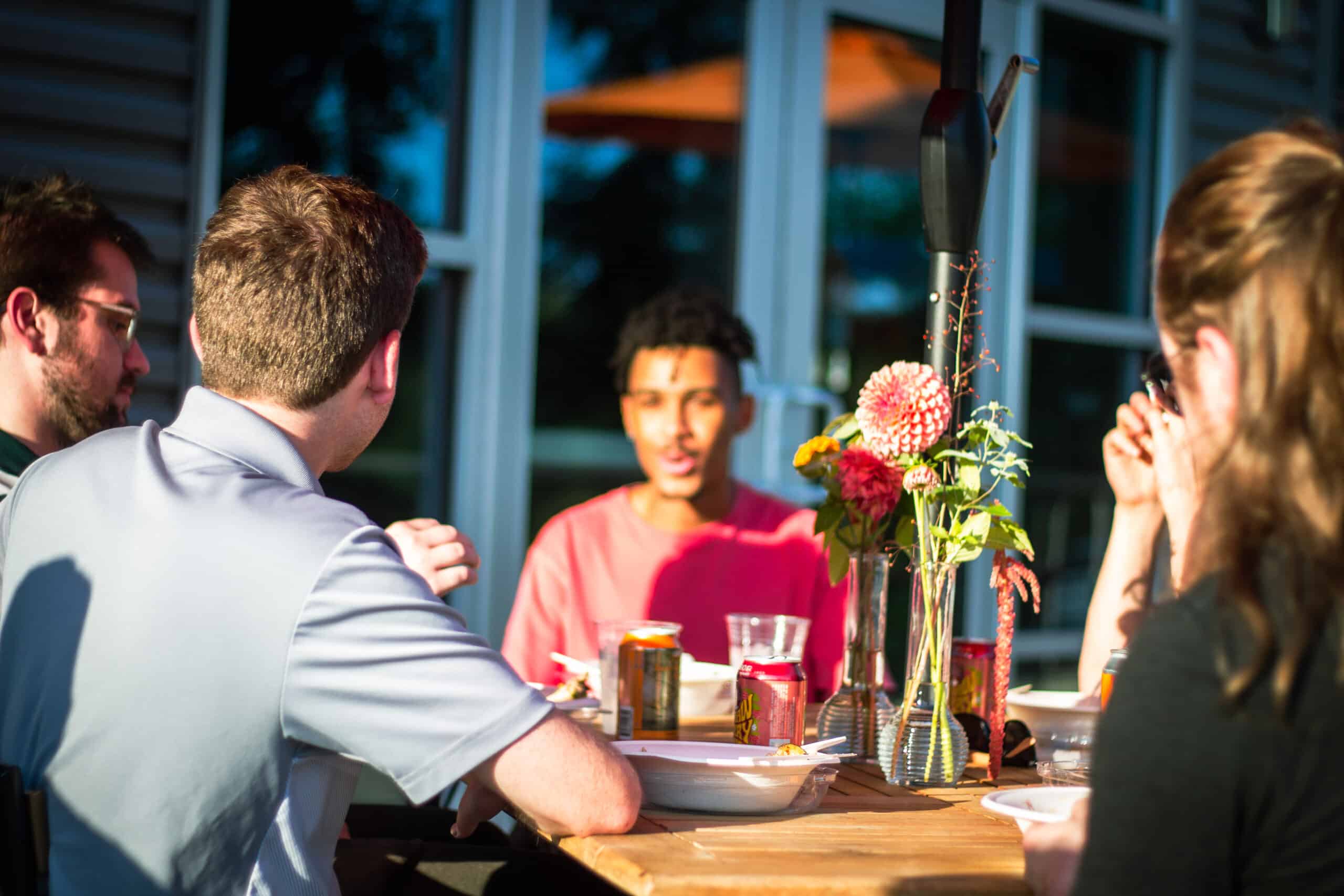Atomic Object offers some great benefits to its employees, but my favorite is pair lunch. The rules of pair lunch are simple: Any two Atoms can go out for lunch, and AO will cover the bill. Pair as often as you’d like, as long as you don’t lunch with the same person twice in one month.
To varying degrees, nearly all Atoms use this benefit. I’ve had lunch with the majority of my coworkers and have had conversations on topics ranging from software testing to genealogy to workplace culture to sous vide cooking. Each time, I come back to my desk knowing and liking my coworkers more. This is one of the many things that supports our sustainable pace of work and makes Atomic a great place to work.
Pair Lunch Lowers Invisible Social Barriers
While the chance to take a break from the workday and grab a bite to eat at any of the great restaurants in the Eastown and East Hills area is obviously appealing, I think the best part about pair lunch is the social structure it provides. In his blog about the cost of pair lunch, Carl wrote:
By making it a benefit, and giving it a name, people seem to feel freer to initiate lunches with no particular agenda or need to meet. This seems particularly valuable in a company with a fair number of people who aren’t naturally inclined to initiate a social event.
Atomic is full of people on the reserved side, who find it much easier to say, “Would you like to have a pair lunch?” than to initiate a conversation with a stranger at the snack bar. It’s been a great way for new employees to become integrated into Atomic.
Pair Lunch Helps Me Cross the Gender Boundary
In addition, I find pair lunches particularly useful as a woman in the tech industry. They allow me to get to know any of my coworkers over lunch without concern about ulterior motives or becoming gossip fodder. While these may seem like unnecessary worries to those accustomed to more homogenous workforces, it has been something that I, and several female friends in the tech industry, have experienced.
So far, in the various workplaces of my career, I have often been the only woman, or one of few women. Being in this position can feel isolating because of social interaction that is more limited, constrained, or otherwise different for me than for my male coworkers. This was particularly true when I was the first woman on a team or in a department. As a result, many opportunities to get to know my coworkers beyond their resume skills went unrealized.
Pair lunch bypasses these issues by providing an existing social structure—no one has to navigate new social territory to make friends outside of their immediate project group at work, but instead, we can use an established, normal tradition at the company.
Pair lunch levels the social playing field and offers inclusion to people who might otherwise feel a sense of “otherness.” Removing these sometimes unseen barriers and bringing people of different backgrounds together makes Atomic Object a better place to work, and more likely to attract and retain diverse talent in the future.
Other Structures that Help Employees Build Relationships
Looking to examples at Atomic and of previous employers and friends’ workplaces, there are other ways that social structures can be used to encourage positive behaviors in a way that feels normal and not subject to extra attention. Some examples might be:
- An amount of time each day or week designated for helping a coworker or customer who might otherwise hesitate to ask for help for fear that they are intruding.
- Chat room channels (we use Slack) to provide places to share interesting but non-work related info like new music or interesting tech articles. This allows people to quickly share knowledge and continue learning without clogging up people’s inboxes.
- In companies with strict fixed work hours, the time before and after those hours can provide an opportunity for socializing without making employees feel like they are wasting work time (because the day hasn’t started yet or is now over). Similar to pair lunch, this builds connections within the company and provides approachability for any work-related issues encountered throughout the work day.
- A designated way to acknowledge coworkers who deserve a “thank you” or praise. One West Michigan company has a system where people can submit thank yous and shout outs to coworkers who have helped them with a difficult task, worked overtime, or done a great job on a project. These notes are compiled and shared before company meetings each week—a nice way to acknowledge people, particularly for those who might not be as comfortable speaking up in front of large groups.
Have you seen other examples? I’d love to hear about them.

